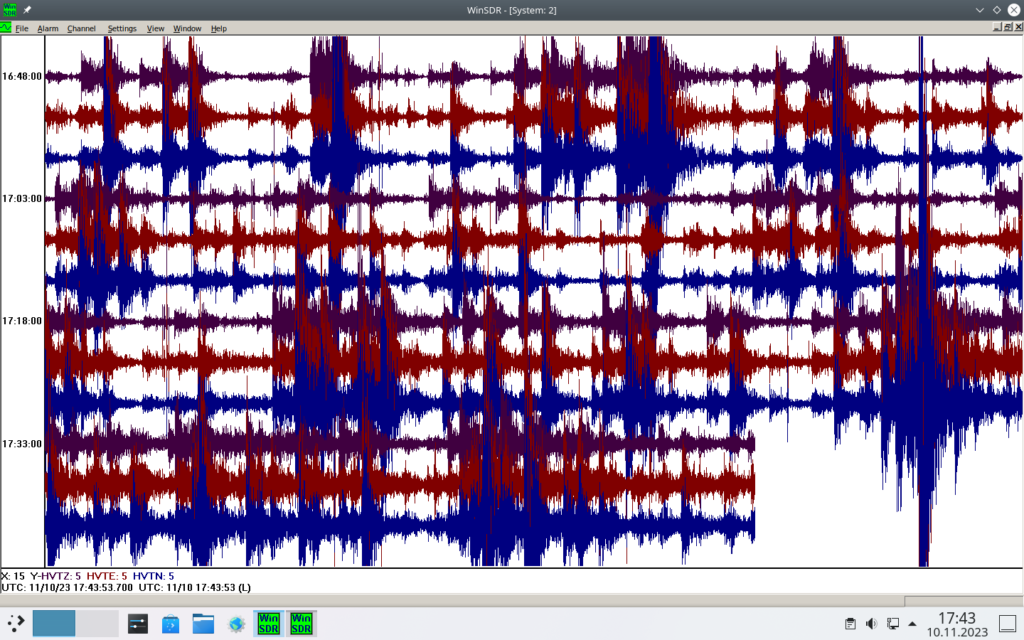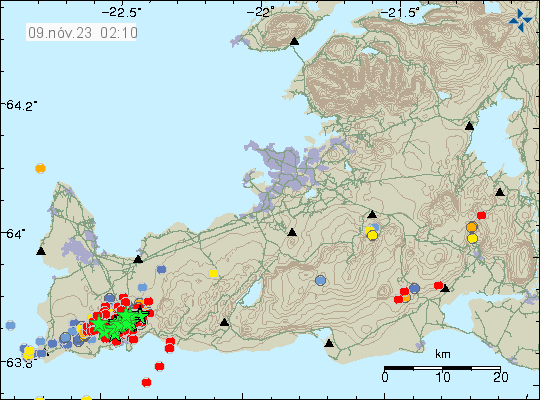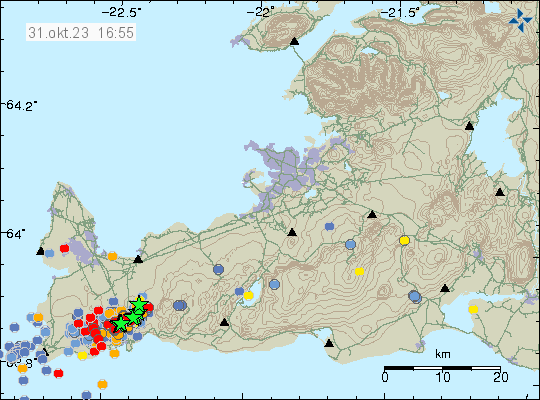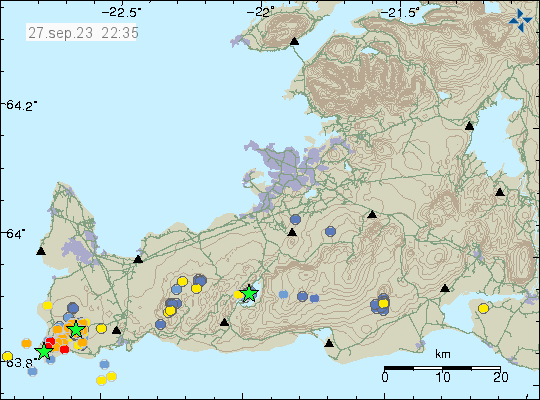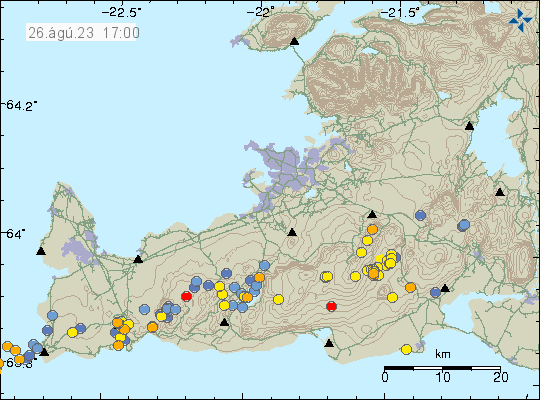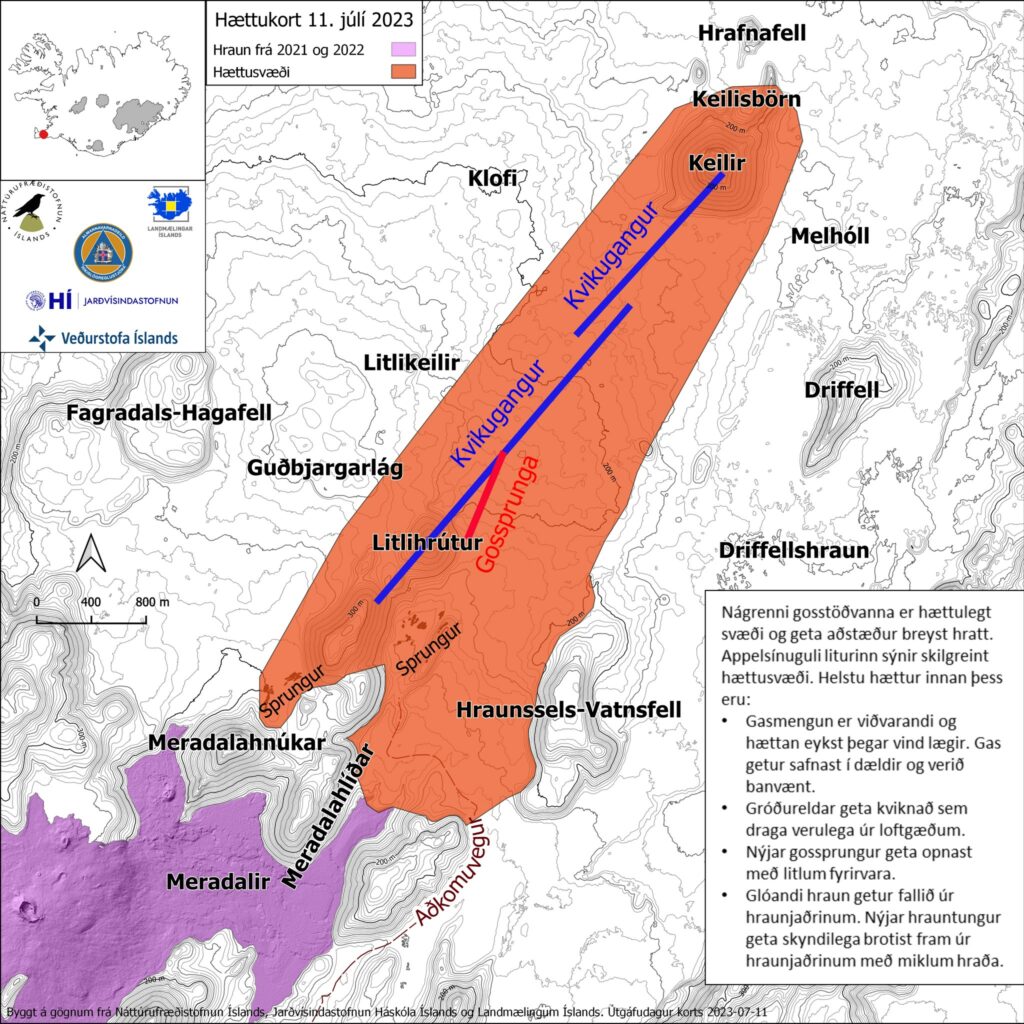Icelandic Met Office has confirmed that magma is now rising to the surface in the area of Sundahnjúkar crater row. This does not seems to be connected to Svartsengi magma (Reykjanes volcano) dyke intrusion. How much magma and what volcano it is connected is unclear at the writing of this article. This might not be connected to Fagradalsfjall volcano also. If that is the case, it means this either a new unknown volcano at this location or rift eruption not connected to any volcano. It is going to take a while to get an answer to that question once the eruption has started.
There is a change in the earthquake activity as the magma goes up the surface. This happens because the layer of crust that the magma goes through does not all have the same density up the surface level. Softer rocks result in fewer earthquakes and harder rock results in higher earthquake activity. It is mostly not possible to know what type of rock the magma is going through. But this shows in the earthquake activity.
I’ll post more updates once I have any new information.

